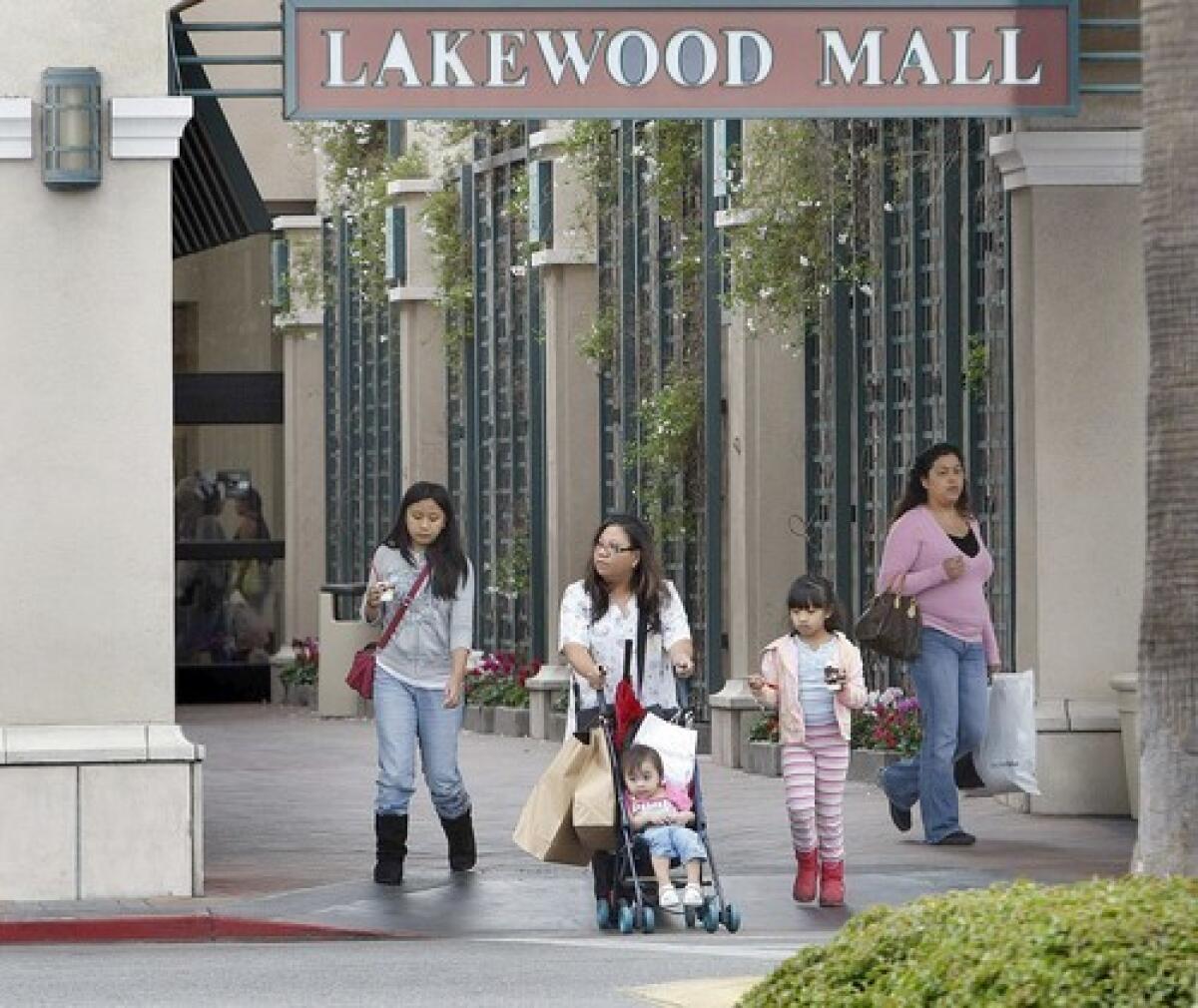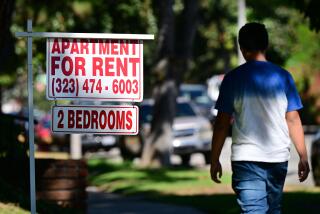Census portrays more of a melting pot in Southern California

The integration of Southern California’s suburban communities continued apace into the second half of the decade, driven by steadily growing numbers of Latinos and Asians moving into middle-class neighborhoods, according to detailed census data released Monday.
Overall, the white population in the five-county region appears to have leveled off after a notable decline in the 1990s. Other groups continued to expand across the region, with the Asian population seeing the greatest increase. But Latinos are by far the largest ethnic group, totaling 7.7 million, compared with about 6.3 million non-Latino whites and 2 million Asians.
The new figures, averaging surveys from 2005 through 2007, offer a first look at population changes since the 2000 census. The numbers suggest the economic boom and robust housing market that peaked in late 2006 lifted many boats, helping change the ethnic complexion of cities across the income spectrum. The release of the data marks the beginning of an ambitious federal effort to replace the census’ former status as a once-a-decade survey with a running portrait of the nation as it changes.
Dowell Myers, USC professor of urban planning and demography, said the growing diversity in Southern California’s sprawling suburbs reflects a broad breakdown of past housing discrimination. The region includes Los Angeles, Ventura, San Bernardino, Riverside and Orange counties.
“Ethnic groups of all types are integrating into suburban neighborhoods. It’s the new normal,” Myers said. “It’s not about color and ethnicity in California anymore. It’s about economic upward mobility.”
The change has been far from uniform, and balances in some communities have shifted in intriguing ways.
Liberal and pricey Santa Monica was among a handful of communities to buck the broader, deeper shifts. The waterfront city of tourism, million-dollar cottages and hip new-economy businesses was one of the few in Southern California to see its white population increase between 2000 and the middle of the decade. Now 72% white, it also was the rare community to see a decline in the number of Latino residents.
At the same time, El Monte, one of the most historically Latino cities in the San Gabriel Valley, has seen a sharp rise in Asian residents since 2000 -- and a decline of nearly 7,800 Latino residents. Rising housing costs in recent years are probably a factor, said Mayor Ernie Gutierrez, who has lived in the city since 1937.
“Hispanic people that have immigrated here and haven’t been here long enough to save up money are probably finding rent here too expensive,” said Gutierrez, 74. He suspects recent immigrant families “might be moving near relatives in other parts of the state or country where jobs are plentiful and housing is cheaper.”
Gutierrez has also witnessed a legacy of segregation give way to a new mix of cultures.
“When I was growing up, most of the Mexicans lived in barrios. They couldn’t buy a house because it was written in real estate agreements not to sell to certain ethnic groups,” he said.
“Today, the Asian population in the city is growing. There are more Asian-owned businesses. . . . Change is inevitable.”
More common for many towns has been a gradual, blending of many ethnicities, like that occurring in the traditionally white post-World War II boomtown bedroom community of Lakewood, north of Long Beach.
There, an older-skewing white majority has slipped to 45% of the population since 2000, while the Asian population increased 17% and Latino population rose 20%. The share of black residents increased about 11%.
“When we first moved here, we were the only black family in the neighborhood,” said Tammy Sutton, 45, who moved to Lakewood from Paramount 19 years ago. A merchandiser for American Greetings, she is biracial -- her father is black and her mother is white.
“When my son started school, he was one of two black kids. Now, it’s a mixture of everything.”
On her block, there are two Hispanic families, two black families, a white family and an Asian family, Sutton said. “Over the 20 years, you just see more and more cultures living here.
“When I first moved here, it was mainly a white area. Now, it’s everybody, and it’s nice.”
In southern Orange County, John Wilkins and his wife, Leticia Lopez Wilkins, moved to Mission Viejo in the late 1990s. The Latino and Asian populations in the city have steadily increased and now account for nearly a quarter of residents -- up from about 19% in 2000. Lopez Wilkins, a former Los Angeles police officer, recalled that when they arrived, they were not only the sole Latinos in the neighborhood, they were the only family of color.
One day, a door-to-door salesperson mistook her for a maid. “She asked me, ‘Do you speak English?’ ” Lopez Wilkins said.
“Probably better than you do,” she recalled responding.
Now, their neighborhood is diverse, with a black family down the street, a Jewish family around the corner and a Vietnamese family across the way, she said.
Integration along class lines has been more pronounced in modern-day Southern California because, in recent years at least, it has not triggered “white flight” common a generation ago and still pervasive in other parts of the country, experts say.
In decades past, many first-generation Californians -- whether immigrants or transplants such as African Americans from the South -- settled in ethnic enclaves, said Hans Johnson, associate director of the Public Policy Institute of California. But their children, often equipped with better education and more income, are migrating to the suburbs, he said.
Across Southern California, the Asian population has increased by roughly 19% since 2000. The Latino population moved up 16.5% while the black population rose by 2.3%.
One study by Johnson’s group found that California neighborhoods integrated in the1990s remained so a decade later, suggesting a new comfort level with diversity. Some of the most integrated areas were neighborhoods with new housing developments, he said.
Easy access to credit over the last decade accelerated neighborhood diversification, and Johnson expects that to continue despite the housing bust.
California’s run-up in housing prices after 2000 actually helped open the real estate market for minorities by diminishing fears that their arrival in a neighborhood meant home values would decline.
Experts stress that the new portrait of Southern California is a rearview snapshot of where the region has just been -- not where it is today or may be heading as the economy and housing market continue a precipitous collapse. But the overarching trends captured in the Census Bureau’s American Community Survey are likely to continue.
The view offered by the new data is partly obscured by several factors:
The numbers were derived by averaging samples taken over three years, from 2005 to 2007. Thus the estimates serve up a rough image of the region since mid-decade, rather than a specific point in time. Because of the limited sample size, margins of error make the results unreliable for some small communities, particularly for relatively small ethnic groups in those towns. And about 50 Southern California cities, including Beverly Hills and Newport Beach, had no figures for technical reasons.
Nonetheless, the results reflect new realities for many like Bang Tran. He didn’t know of many other Asians in El Monte when his family moved there in 1979.
“It was all Hispanic people,” said Tran, 38, who now lives in Monrovia but still helps out at his family’s Vietnamese restaurant, Viet Huong, in his old neighborhood. Today, he says, Asian populations that had been concentrated in neighboring cities such as Alhambra and Monterey Park are spilling into El Monte.
“You look down Garvey [Avenue] and you can just see how Asian shopping has boomed,” he said of the city’s main drag.
Connell, Smith and Watanabe are Times staff writers.
Times staff writers Catherine Ho, Yvonne Villarreal, Paloma Esquivel and data analyst Sandra Poindexter also contributed to this report.
More to Read
Start your day right
Sign up for Essential California for news, features and recommendations from the L.A. Times and beyond in your inbox six days a week.
You may occasionally receive promotional content from the Los Angeles Times.








